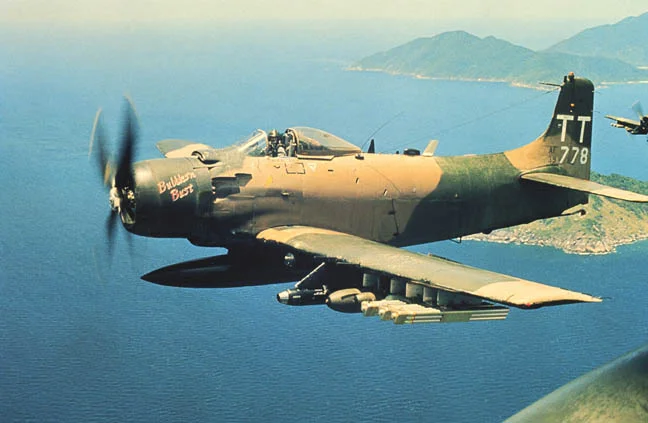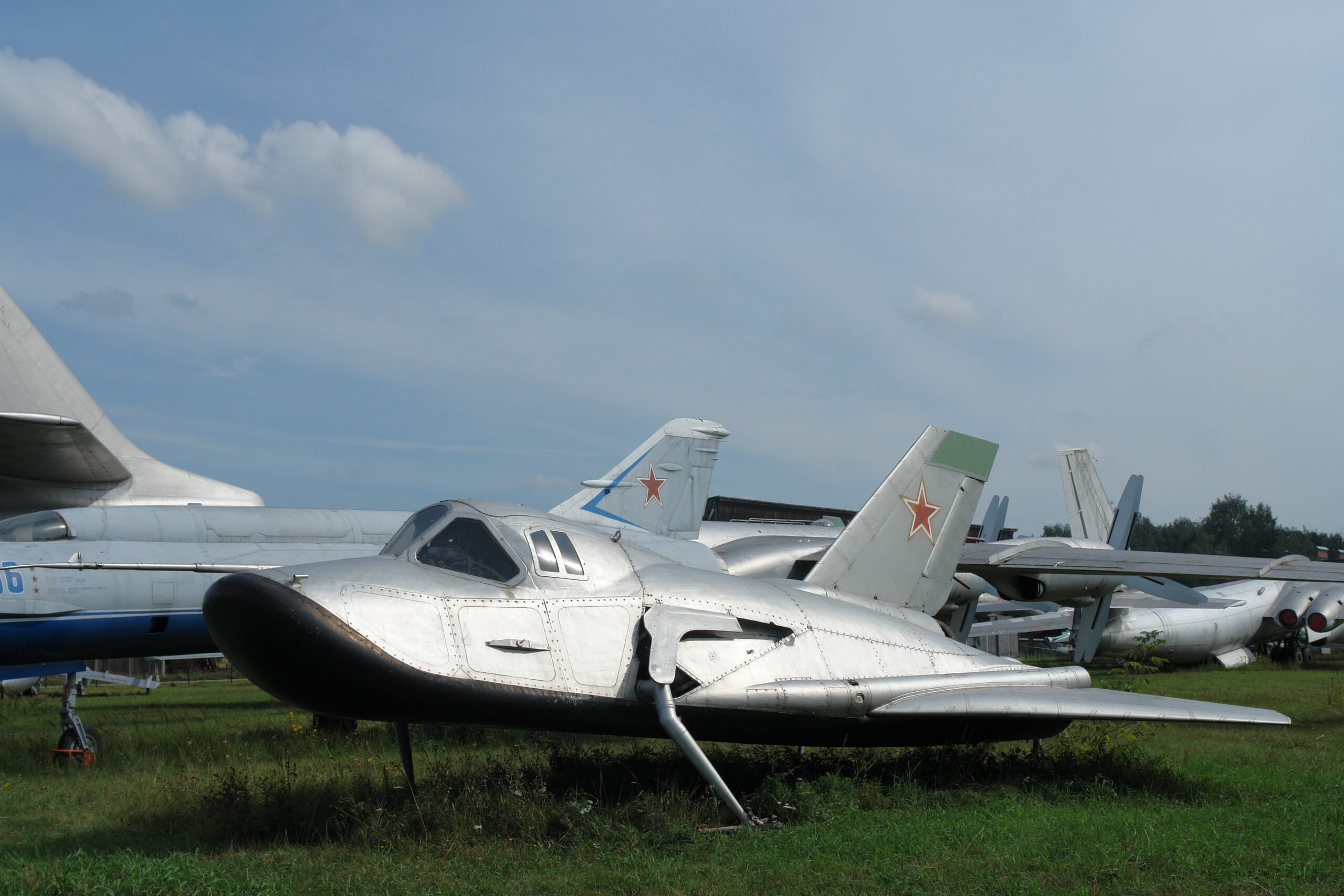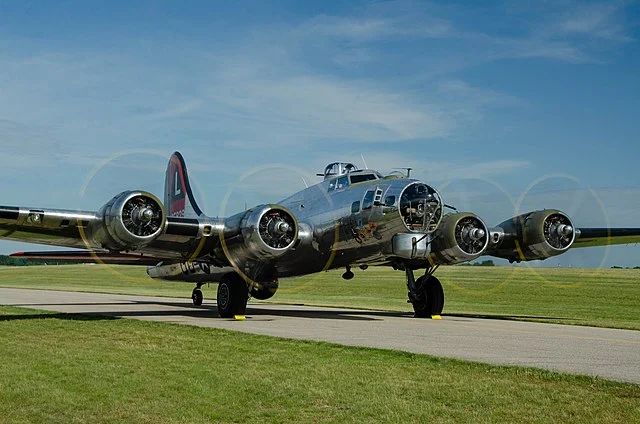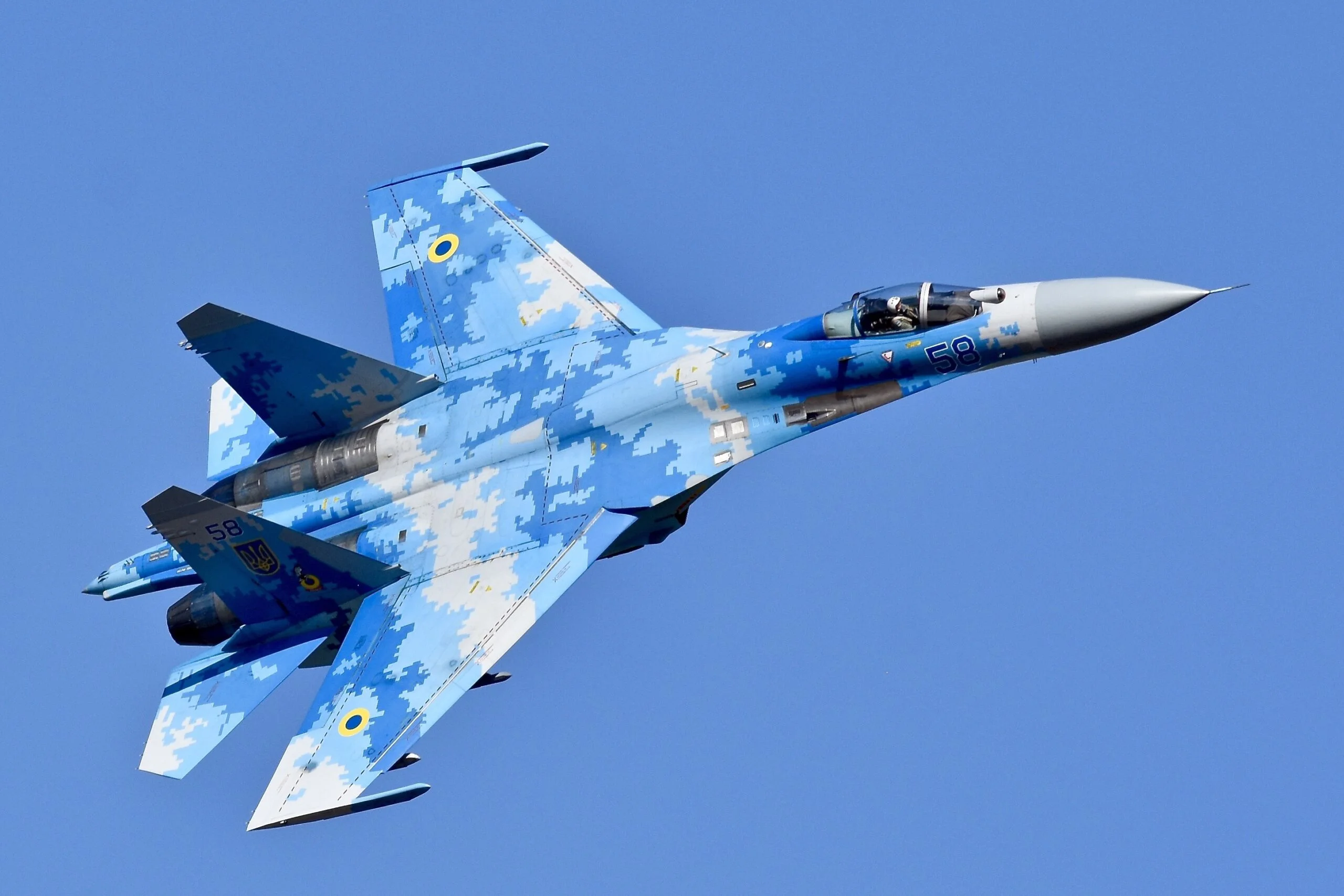The Douglas AD-4 Skyraider was originally intended as a Second World War dive/torpedo bomber. It was developed by Douglas Aircraft Company as a single-engine, propeller-driven attack aircraft with a piston-powered engine that could serve a multi-use function and alleviate the need for tail gunners in existing bomber and strike planes.
It saw active service in the United States military from the late 1940s up until the mid-1970s. Although the Skyraider entered service at the time of the jet age, it proved itself to be a flexible aircraft that could perform a wide range of missions, from close air support, bombing, reconnaissance, and aerial refuelling.
The A-1 proved that modified versions of the Skyraider could perform frontline duties as effectively as jet aircraft in conflicts of the post-war era.

Contents
Origins & Development
The origins of the Skyraider can be traced back to the height of the Second World War at a time when American forces were engaging Japan in the Pacific theatre. Carrier-borne air warfare from 1942 onward had shown American military strategists and navy chiefs that a higher number of fighter planes were needed in aircraft carrier groups to protect carrier-based bomber squadrons and the aircraft carrier itself from enemy attacks.
Read More: The Fearsome Flanker Family
In 1943, the US military decided to reduce the number of strike aircraft, such as the Douglas SBD and the Grumman Avenger, and instead focus on single-seat multi-use fighters that could perform both a strike role and act as an air escort for larger planes.
The specification for the new plane was given the name “bomber-torpedo” (BT) and a design competition was opened to aircraft manufacturers. It was hoped that the new vehicle would also reduce the need for bombers to carry additional machine gunners and the weight saved from removing a machine gun and the additional airman would leave more room for a larger bomb payload.

The development of the Skyraider began in 1944 with the Douglas Aircraft Company being one of three manufacturers tasked with producing the new aircraft under chief designer Ed Heinemann.
The new aircraft was intended to have the latest Pratt & Whitney R-4360 radial engine to give it speed and agility. The specification also called for the new design to carry its weapons payload to be carried underneath the plane on external racks.
Heinemann originally considered submitting the XBTD-1 prototype design that Douglas had conceived a year before. It was based on the existing XSB2D-1 Destroyer fighter-bomber design with the tail gunner removed while keeping the same wing and bomb bay features.
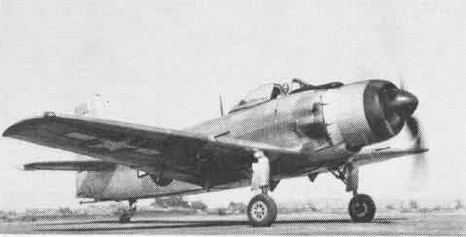
Although the US Navy put down an order for over 300 of the XBTD-1 concept, Heinemann had reservations about how long it would serve and felt the navy would use it as a temporary aircraft until a more advanced design came to take its place.
Heinemann was also aware that Curtiss had submitted their XBTC-1 design in response to the specification. As had Kaiser-Fleetwings who were creating the XBTK-1 and Martin which had proposing the XBTM-1. All three concepts were based on entirely new designs whereas the XBTD-1 was essentially a facelifted version of an existing plane.
In June 1944, Heinemann instead proposed that Douglas create a new design from scratch and said it would present in 30 days, a time frame the US military could not afford with the war raging. Instead, navy officials asked to see a presentation of the new design idea the next day.
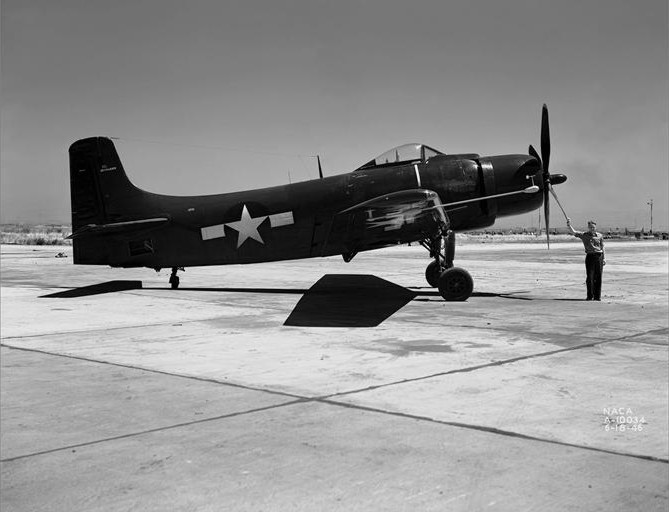
Despite the narrow time frame, Heinemann and his team had been drawing design ideas for several weeks prior and had concepts to work from. The finishing touches to the final design were completed by Heinemann and his team in a hotel room in Washington DC throughout the night before they were presented to the navy in the morning a few hours after completion.
The new design was completely different to the XBTD-1 apart from the engine. The new plane was based on a more straightforward design with low-mounted wings that carried the payload on racks. Two wing-mounted 20mm cannons would provide the plane with strafing and dogfighting abilities.
The navy approved the new design and gave Heinemann a deadline of nine months to get the plane up and running.

Heinemann was helped by Curtiss falling behind schedule with their design but was also conscious of the fact it would be a race against the clock to get the new Douglas design in service. To save time, the Douglas concept borrowed the wheels from a Vought Corsair and had to use an older engine which didn’t produce the power intended.
Read More: The F-22 Raptor – The Fighter of the Future
The first prototype completed its maiden flight in March 1945 and despite the design having to make sacrifices to save time, it proved to have excellent agility and handling. It was lighter than its rivals and able to carry a larger payload than Douglas’ previous designs with a maximum payload of 7,400 lbs. It held a top speed of 322 miles per hour and a range of up to 1,000 miles.
A few months after the maiden flight, the Navy placed an order for 548 production aircraft based on its performance and the fact it was less complex and cheaper to maintain compared to its rivals.

Service
Due to its design in the latter stages of the conflict, the Skyraider did not see action during the Second World War.
The US military also predicted that fighters would be powered by jet engines and propeller drive aircraft would soon become obsolete. As a result, the navy reduced its orders of the Skyraider to 200 units.
Nevertheless, the navy continued with the testing process of the Skyraider and began evaluating completed airframes in 1946. Feedback was highly positive, with pilots commending the plane’s agility and diving capabilities, but metal fatigue was detected in the airframe which Heinemann quickly fixed. Pleased with the results, the navy commissioned the Skyraider for production.
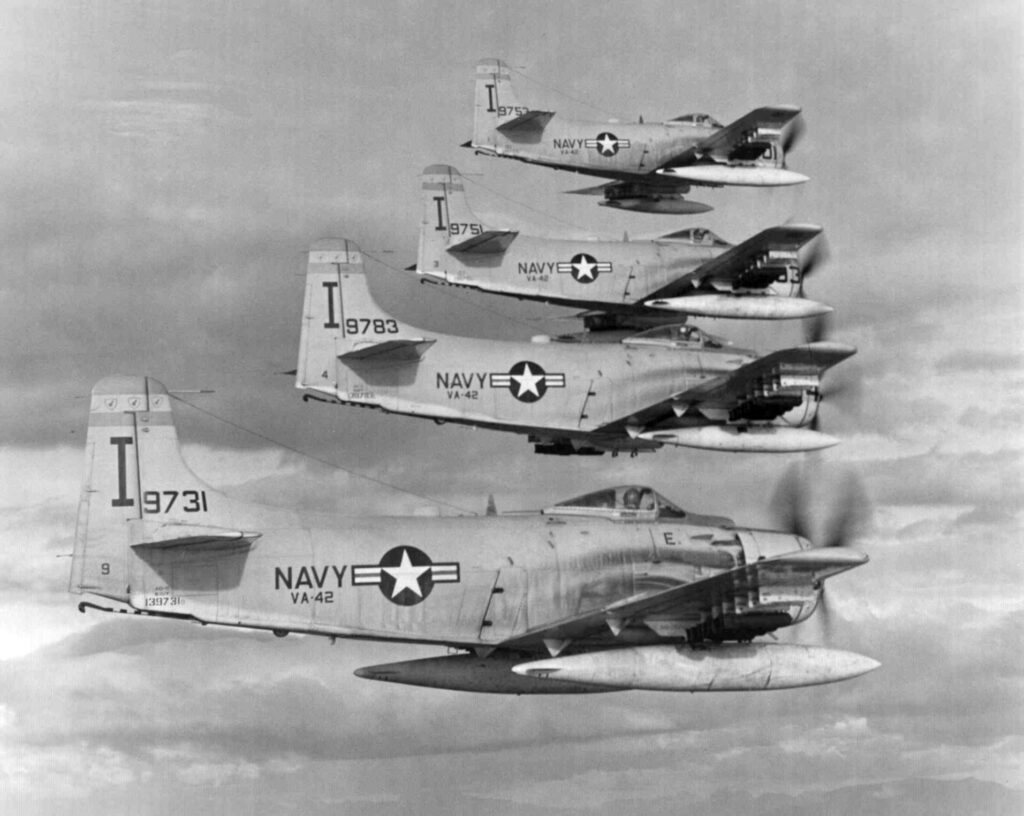
The production version of the Skyraider, which was designated the AD-1, entered service in 1946. The service version was armed with a variety of weapons, including guns, rockets, and bombs, and it could carry up to 8,000 pounds of ordnance.
The Skyraider quickly proved popular with aircrews, but carrier landings were found to put extreme stress on the wheels and structure which required more maintenance work.
Douglas responded with the updated AD-4 version in 1949 which featured a modified structure and a new autopilot system. The navy placed orders for the AD-4 with delivery beginning in 1950.
However, the end of the war had reduced the need for vast numbers of aircraft orders, and it was assumed the AD-4 would not serve for long in a front-line capacity with the jet age arriving.

Combat Record
In June 1950, the situation dramatically changed with the onset of North Korea’s invasion of South Korea with Soviet support.
The sudden outbreak of the war put the AD-4 into frontline combat roles. In July 1950, a squadron of AD-4s carried out the first American airstrikes against North Korean airbases near the capital of Pyongyang.
Read More: Kaman K-MAX Helicopter – Function over Form
Due to North Korea’s rapid ground advance, more AD-4 units were brought in to continue strikes and provide fighter support to other AD-4 squadrons performing bombing or strike missions.

Although the war saw the introduction of jet fighters in combat, the AD-4 quickly proved itself as a rugged and versatile plane. It performed both day and night duties over Korea, initially from aircraft carriers and then from airbases in South Korea.
The plane’s ability to carry a large amount of ordnance, outmanoeuvre enemy fire and remain in the air for longer periods made the AD-4 ideal for providing close air support to ground troops engaging with North Korean forces.
The Skyraider also performed a variety of other missions during the war, including aerial reconnaissance, electronic warfare, and search and rescue.

The US Navy and Air Force began to complain there was not enough AD-4s available and so Douglas continued the production of the plane up until 1952, which included a modified version able to carry a nuclear bomb although this was never used in combat.
Aftermath
The end of the Korean War in 1953 did not see the complete end of the Skyraider’s production or service.
In 1953, Douglas produced the AD-4B—plus LABS (Low-Altitude Bombing System) which featured updated bomb racks, a jettisonable canopy to enable pilot escape and a hydraulic tailhook for carrier lands. The Plus variant replaced many of the existing AD-4s.
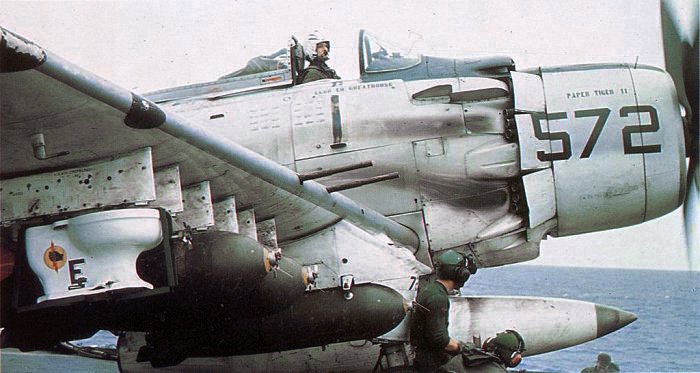
The AD-4 Skyraider continued to see frontline action in the Vietnam War. Like its role in Korea, it provided close air support to American and South Vietnamese ground forces.
The Skyraider proved itself to be particularly effective in attacking enemy positions in heavily forested areas, where its slower speed and ability to circle over a target made it more effective for precision-focused strike missions over more manoeuvrable but faster jet aircraft.
Read More: Lockheed SR-71 Blackbird – The Plane Designed to Leak
By the mid-1960s, the Skyraider was gradually phased out of military service and replaced by more modern jet aircraft, such as the A-4 Skyhawk and the A-7 Corsair II. However, the Skyraider continued to serve in various roles non-combat roles, such as electronic warfare, air-to-air refuelling, and maritime search and rescue. It was finally retired from all active service in the mid-1970s.

Despite being a piston-engine aircraft completed after the Second World War, the AD-4 Skyraider was highly valued by those who flew it and by the troops it supported on the ground in an era when aerial combat was dominated by jet-powered planes.
The Skyraider proved itself to be rugged, versatile, and highly effective in a wide range of missions, and it earned a well-deserved reputation as one of the most successful attack aircraft of its time.
Specifications
- Crew: 1
- Length: 38 ft 10 in (11.84 m)
- Wingspan: 50 ft 0.25 in (15.2464 m)
- Height: 15 ft 8.25 in (4.7816 m)
- Empty weight: 11,968 lb (5,429 kg)
- Gross weight: 18,106 lb (8,213 kg)
- Powerplant: 1 × Wright R-3350-26WA Duplex-Cyclone 18-cylinder air-cooled radial piston engine, 2,700 hp (2,000 kW)
- Maximum speed: 322 mph (518 km/h, 280 kn) at 18,000 ft (5,500 m)
- Range: 1,316 mi (2,118 km, 1,144 nmi)
- Service ceiling: 28,500 ft (8,700 m)
- Rate of climb: 2,850 ft/min (14.5 m/s)

